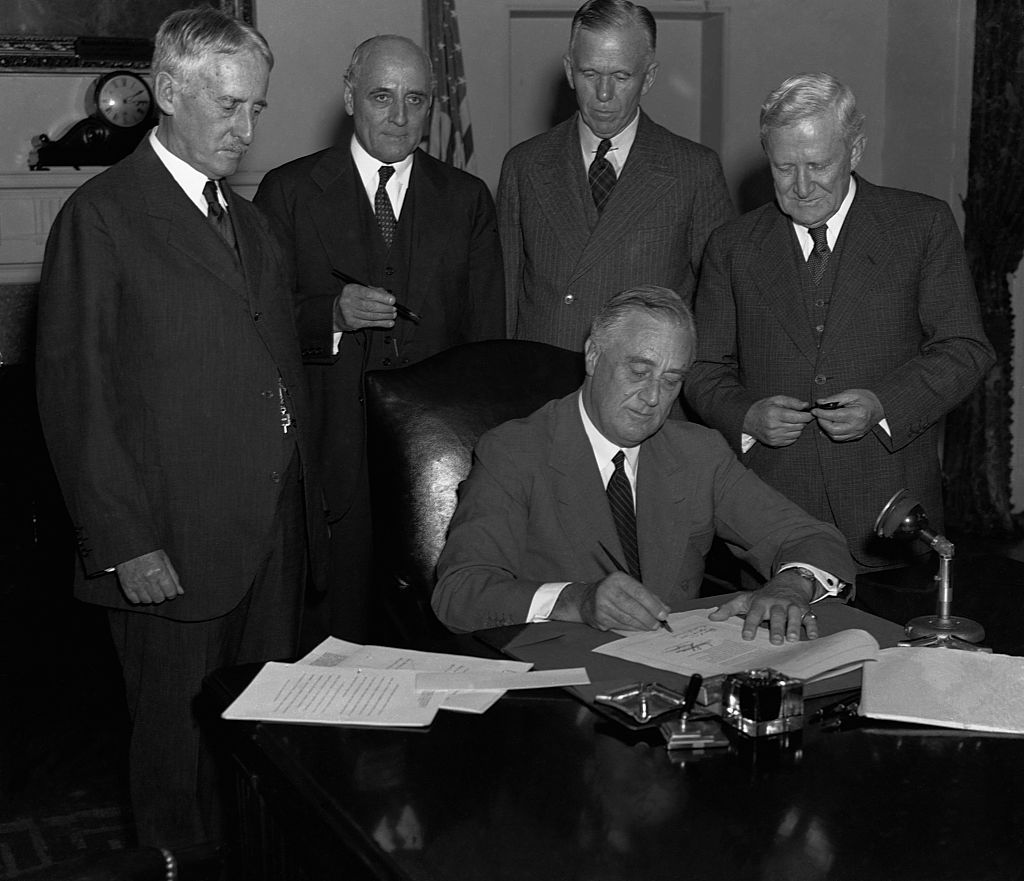

The sudden end of World War I in November 1918 saw over 4.7 million Americans in uniform. Unaware of the desperate situation in Imperial Germany brought about by the Allied blockade, the Allied command expected strong German resistance to take the war into 1919.
American doughboys found themselves either quickly released into a rapidly declining post-war economy or stuck overseas to perform occupation duty in a defeated Germany. Either way, these veterans had missed out on the benefits of the booming wartime economy their non-serving fellow citizens had enjoyed, however, the Great War veterans were eventually promised a monetary bonus, payable in 1945.
When the Great Depression set in during the early 1930s, impoverished veterans asked for an early payment. At the time there was no unemployment insurance, food stamps, welfare or social security. The struggling vets soon began to be called the “Bonus Army.”
The destitute veterans, many of whom worked hard to be successful after the war, and their families marched on Washington D.C. in mid-1932 and occupied an area across the Anacostia River from the District.
Protests were frequent, but successive attempts in Congress to authorize an early bonus payment failed. After local police were unable to break up the camp, President Hoover ordered the Army to disperse the veterans. In charge was Gen. Douglas MacArthur, and then Col. Patton was involved. The Army’s actions were heavy-handed, including mounted cavalry with drawn sabers and the use of tear gas on veterans who had suffered through poison gas attacks during the war. Combined with the stiff resistance of the combat vets, the optics in news photos and reels were terrible, and the Bonus Army became one of the saddest episodes in U.S. history.
Franklin Delano Roosevelt, a Democrat, defeated Herbert Hoover in the presidential election later that year. Large public work projects under Roosevelt’s New Deal legislation gave vets hiring priority for meaningful work. One of those projects was the Overseas Highway connecting the Florida Keys to the mainland, which employed over six hundred veterans.

By 1935, the work had progressed to the Middle Keys of Florida, with three work camps housing mostly veterans spread among several nearby islands. Over the 1935 Labor Day weekend, a small, sudden but extremely powerful Category Five hurricane, the strongest ever to strike the U.S., ravaged the low-lying Middle Keys, with winds over 200 miles per hour and a huge storm surge. A single evacuation train, dispatched too late, was blown off the tracks and then engulfed by storm surge. Over 250 veterans were killed. Once again, America’s World War I veterans had suffered a tragedy brought about by their own government.
As these episodes took place, other veterans of the Great War were gathering political power. Following the example of Civil War veterans, of whom four had become President of the United States, World War I veterans organized, assumed leadership roles across society, and sought elected office. Organizations like the American Legion, begun by Great War veterans in 1919, and the Veterans of Foreign Wars, its ranks now swelled by former doughboys, became the center of social, political, and community life across small towns and city neighborhoods. Their members numbered in the millions and combined with wives and family members; they became the “twin pillars” of veteran advocacy for decades.
When the U.S. entered World War II in 1941, key legislators, many of them Great War veterans and prominent American Legion leaders, began a bipartisan effort to avoid the mistakes made with World War I veterans. Slowly a consolidated bill of benefits, which would be made immediately available to honorably discharged veterans, began to take shape. When feedback from the battlefields indicated an overwhelming preference for educational benefits, those benefits were emphasized over the employment guarantee programs of the past.
By early 1944, wounded WWII veterans were starting to return to civilian life in significant numbers, and large invasions were looming in Europe and the Pacific, which would create even more disabled veterans. Roosevelt and Congress, with the Bonus Army & the 1935 Labor Day Hurricane veteran deaths in mind, ensured the passage of the Servicemen’s Readjustment Act (the G.I. Bill) to help veterans of World War II. Roosevelt even commented that both Hitler and Mussolini had been disgruntled World War I veterans in their countries, and the world was now suffering the consequences.
The law established the system of VA hospitals we know now, low-interest home mortgages, and payments for college and trade school tuition and expenses for veterans. The Veterans Administration, which had existed with a limited scope since 1930, was modernized and greatly expanded to accommodate the returning World War II veterans.
